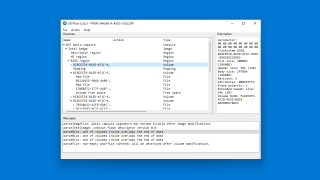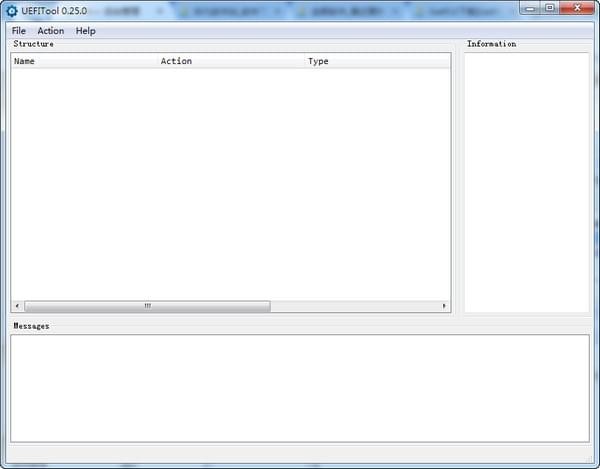

Watch the Youtube video of DEFCON22 talk on CHIPSEC to see when/why to use some of it’s commands. Only load it when you are using CHIPSEC.) I’ll bring some scripts to make it easier to use CHIPSEC on Linux systems.
UEFITOOL GIGABYTE DRIVER
(The CHIPSEC kernel driver is not a safe thing to keep loaded, see their warning.txt.
UEFITOOL GIGABYTE INSTALL
So please bring a Intel UEFI-based laptop running Windows or Linux, where you can install CHIPSEC on it. So let’s use CHIPSEC installed natively on your laptop. One change of plans for the lab: I’ve been having problems getting LUV-live to boot on various machines, so don’t want to tie the lab to booting thumbdrives to use CHIPSEC. This Sunday we’re having a class on using CHIPSEC and related firmware security tools: Then, we could focus on reliability of the open source codebase and the handful of closed-source firmware drivers, instead of relying on the IBV/OEM to give us black-box fimware updates when they feel like it. Windows OEMs generally screw up Windows with various bloatware unlike with OS software, you cannot undo firmware bloatware, the OEM won’t permit you to rebuilt the firmware image (unless you have a Tunnel Mountain or MinnowBoard), and the OEM doesn’t provide standalone UEFI drivers/services so that you could rebuilt your firmware from and/or plus the delta of blobs (OEM/IHV drivers). Malware authors can take advantage of these remote control features, like Hacking Team is doing. Many firmware solutions target enterprise sales, so they’re happy to have phone-home style technology in their systems, to track their assets. Hacking Tool should remind people that they don’t have a clue what modules are burned into their firmware.
UEFITOOL GIGABYTE HOW TO
Study this Intel blog post for a very topical example of how to use CHIPSEC to protect your system from bootkits. They used CHIPSEC and UEFItool to analyse this malware, two excellent tools for UEFI forensic analysis. Unlike other news stories on Hacking Team, this blog shows you how to check if your system is infected. It’s analysis of the malware is excellent, and worth reading. I just found out about this blog entry by the Intel Advanced Threat Research (ATR) team: There’s been a lot of mainstream coverage on this news.


Hopefully, the system will work and you will have modded splash screen! (For me it did work on X99UD3.A quick follow-up to the Hacking Team UEFI malware story. jpg or whatever that works, irfanview works great on identifying the correct extensionġ0) Right click on "Raw section" line, "Replace body." and select the. That is what the guide is about!ġ) DL UEFITool_0.21.4_win ( ), run UEFITool.exeĢ) Ctrl+O, select BIOS file you hopefully already have somewhere readyģ) Ctrl+F, select tab labeled "GUID", input 7BB28B99-61BB-11D5-9A5D-0090273FC14DĤ) Double-click on the first of three listed "7BB28B99-61BB-11D5-9A5D-0090273FC14D"ĥ) Press on plus sign next to 7BB28B99-61BB-11D5-9A5D-0090273FC14D, then again on anotherĦ) Right click on "Raw section" line, "Extract body." and saveħ) You can rename the. Hello! I suppose you came here to find out how to change your ami aptio BIOS splash screen. Disclaimer: I am not responsible for any damage caused by this guide, etc., use at your own risk.


 0 kommentar(er)
0 kommentar(er)
